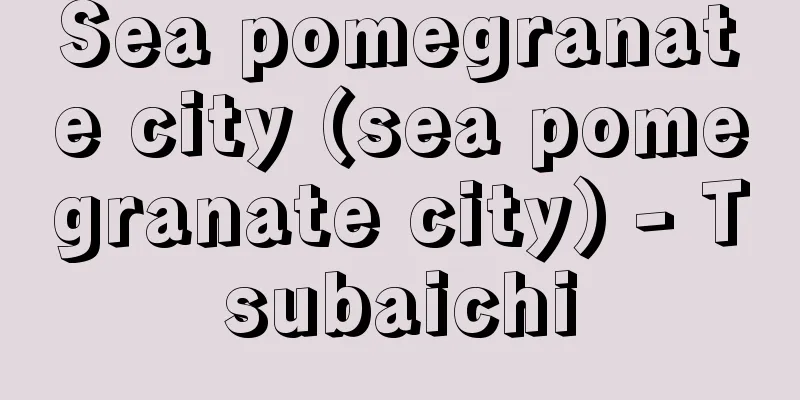Second Union - Dainikumiai

|
A new labor union is formed by dissatisfied members of a labor union who have left an old union. In this case, the original union that existed before the split is called the first union in contrast to the second union. The reasons for the formation of second unions generally include (1) union members' dissatisfaction with the union's organizational management and movement policies, (2) factional conflict among union leaders, (3) intervention by rival upper organizations, political parties, and other groups, and (4) attempts by employers to split unions. In Japan, in particular, the country is characterized by company-based unions that share the same foundation as management organizations, making it vulnerable to employer attempts to split unions, such as buying off union leaders and directing profits, and this is a major factor in the formation of second unions. The characteristics of the second union are, firstly, that organizationally it is mainly made up of people close to the employers, such as the staff, workers with managerial duties, and job titles, and secondly, that it has adopted a moderate line of movement, rejecting the line of class struggle and instead promoting labor-management cooperation and trade unionism. For this reason, the second union often cooperates with the employers' organized attacks on the first union, and plays the role of a subcontractor in breaking up the union. Also, in times of disputes, for example, they often play the same role as strikebreakers, seeking early settlements or settlements on lower terms than the first union, and in effect become government unions. There are ways to prevent the formation of such second unions, such as by concluding union shop agreements, closed shop agreements, or sole bargaining clauses, but these are not necessarily effective. Effective ways to prevent the formation of second unions are to steadily increase the union's fighting power and unity by (1) establishing union democracy, (2) promoting workplace struggles, and (3) strengthening union members' theoretical education. In addition, if an employer lends a helping hand in some way in the formation of a second union, or if it concludes a labor agreement including a union shop agreement or sole bargaining unit clause immediately after the formation of a second union, rather than the first union, this is clearly considered an unfair labor practice. [Kenji Yoshida] [References] | |Source: Shogakukan Encyclopedia Nipponica About Encyclopedia Nipponica Information | Legend |
|
労働組合内の不満分子が、これまでの組合を脱退して新しく結成した労働組合をいう。この場合、分裂前の最初にあった組合を第二組合との対比で第一組合とよぶ。第二組合結成の原因としては、一般に、〔1〕組合の組織運営、運動方針に対する組合員の不満、〔2〕組合幹部の派閥対立、〔3〕対立する上部組織や政党など他団体の介入、〔4〕使用者による組合分裂工作、などがあげられる。とくに日本の場合は経営組織と基盤を同じくする企業別組合を特色としているため、組合幹部の買収、利益誘導など使用者側の分裂工作を受けやすく、第二組合結成の有力な要因となっている。 第二組合の特徴をあげれば、第一に組織的には職員層、役付き工、職制など使用者に近い者が主体となっていること、第二に運動路線としては階級闘争路線を排して労使協調、労働組合主義など穏健路線がとられていることである。このため第二組合は、しばしば使用者側の第一組合に対する組織的攻撃に協力し、組合切り崩しの下請機関的な役割を担う。 また、争議時を例にとれば、早期妥結や第一組合よりも低額条件で妥結をみるなど、スト破りと同じ役割を演じ、事実上御用組合となっている例が多い。 このような第二組合の結成を防止するためには、ユニオン・ショップ協定やクローズド・ショップ協定あるいは唯一交渉約款を締結するなどの方法もあるが、かならずしも有効な手段とはなっていない。第二組合防止の有力な方途は、〔1〕組合民主主義の確立、〔2〕職場闘争の推進、〔3〕組合員の理論学習の強化、などにより地道に組合の闘争力、団結力を高めることである。なお、第二組合の結成にあたって使用者がなんらかの形で手を貸すなどしたとき、あるいは第二組合の結成直後に第一組合を差し置いてユニオン・ショップ協定や唯一交渉団体条項を含む労働協約を締結した場合には、明らかに不当労働行為とみなされる。 [吉田健二] [参照項目] | |出典 小学館 日本大百科全書(ニッポニカ)日本大百科全書(ニッポニカ)について 情報 | 凡例 |
>>: Second Republic (English: La Deuxième République French)
Recommend
Beauty Point
…Population: 67,000 (1991). Located about 60 km u...
Sutra meeting - Kyoe
〘 noun 〙 A Buddhist ceremony to offer all the sutr...
Takei ruins
This is a pre-pottery site located in Idehigashi, ...
Echizen ware
Pottery made in the Nyu District area of Fukui ...
Kuching - Kuching (English spelling)
The capital of Sarawak, Malaysia's Borneo sta...
《Ochamenoto》 - Ochamenoto
...It is found in both the Okura and Izumi school...
Criminal Procedure
It refers to the reality of criminal procedures a...
Crescent moon [town] - Mikazuki
An old town in Sayo District, western Hyogo Prefec...
Toshihira Iida
Year of death: June 26, 1886 (Meiji 19) Year of bi...
Pirate films
Among the action films from the Middle Ages to the...
Saskatoon - Saskatoon (English spelling)
A city in the south-central part of Saskatchewan,...
Dinoflagellate - Uzbenmousoului
Single-celled organisms with two flagella. They ar...
Coromandel Coast - Coromandel Coast
The coastline on the eastern coast of the Indian ...
Christmas
…Christmas means the mass of Christ in English. T...
Miridae
…General term for insects of the Miridae family i...









